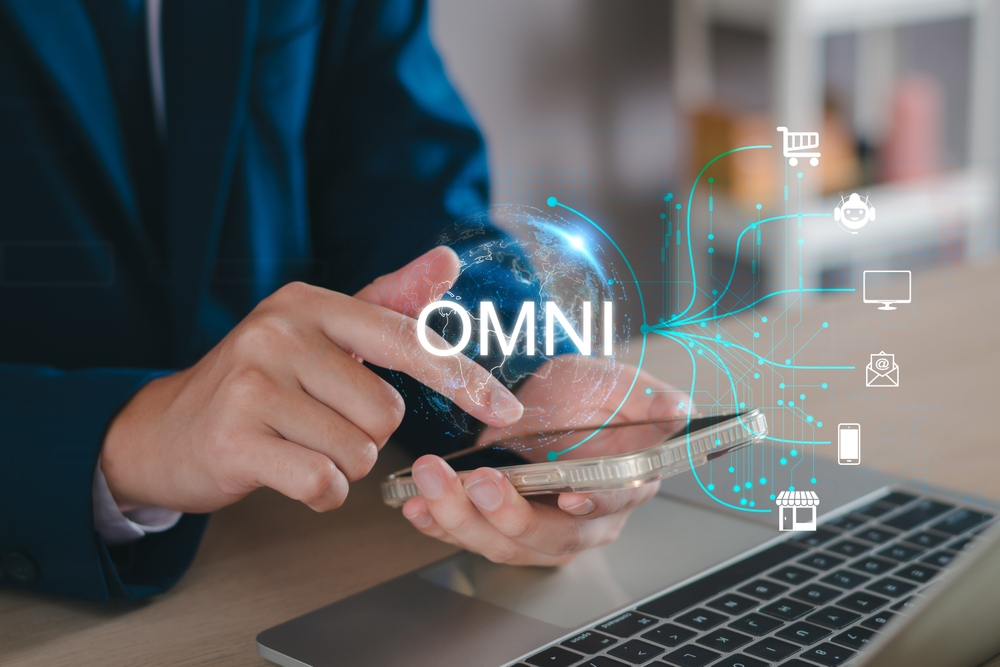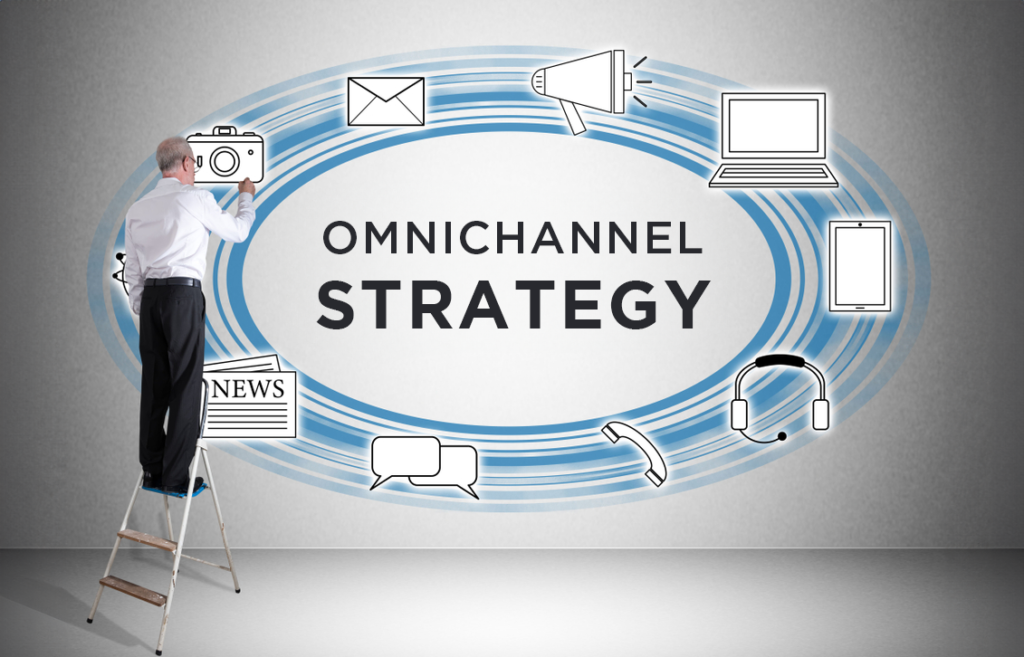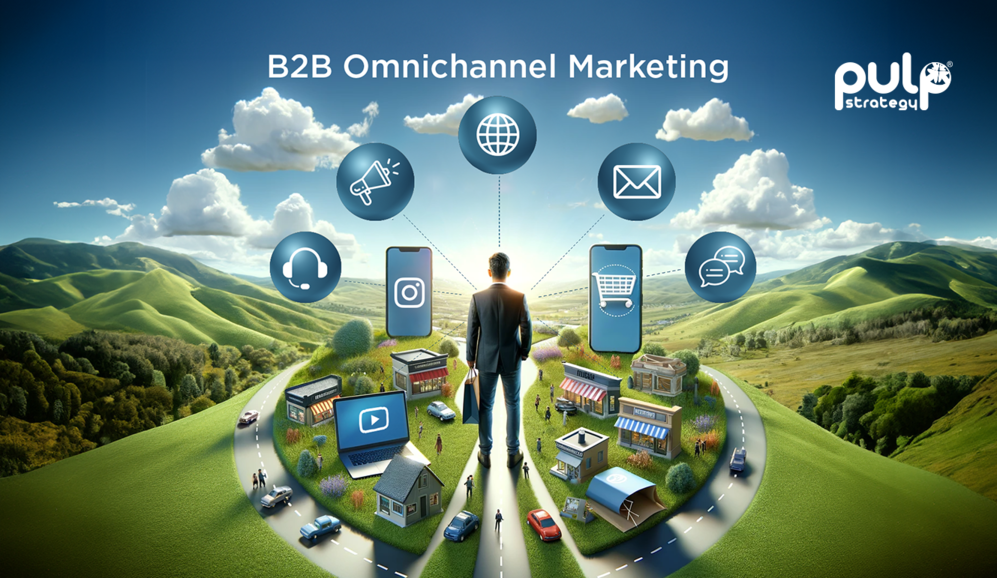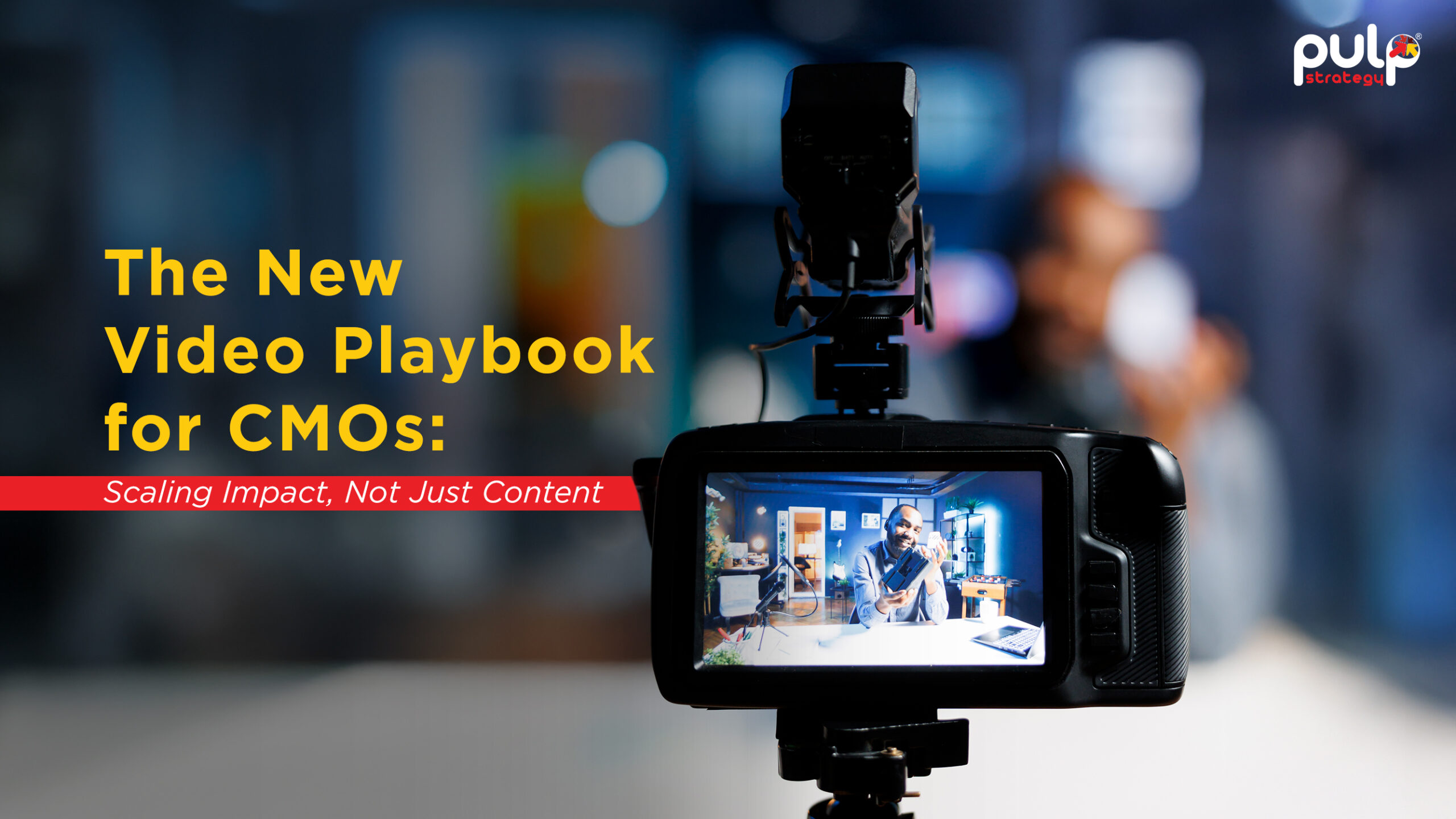Leveraging multichannel strategies can enhance engagement, but it often falls short of achieving optimal results. So, how do you go from fragmented to fluid while adopting an omnichannel approach?
In a vigorous marketing landscape like today’s, the B2B buyer journeys are no longer linear. They expand into online research, webinars, social media interactions, and even physical events, demanding a cohesive experience across all touchpoints. It is time to draw your attention toward comprehensive omnichannel marketing – a strategic approach that unifies all marketing and sales channels to create a cohesive customer journey. While separate online and offline marketing efforts are still relevant to a multitude of businesses, it is crucial to build a consistent brand experience.
Here's a breakdown of what omnichannel marketing means for B2B businesses:
- Seamless Customer Experience: Omnichannel marketing ensures a smooth journey for B2B buyers. They might encounter your brand through a social media post, download a white paper from your website, and then attend a webinar where they connect with your sales team – maintaining a consistent messaging tone tied with the brand identity.
- Personalized Interactions: Omnichannel marketing allows you to gather data from various touchpoints and personalize your approach. This can involve tailoring content recommendations, offering relevant case studies, or even sending targeted email campaigns based on a buyer's specific needs and interests.
- Data-Driven Decisions: By integrating data from all channels, you gain valuable insights into your B2B audience's behavior. This data can be used to refine your marketing strategy, identify high-performing channels, and ultimately optimize your campaigns for better ROI.
- Unified Brand Image: Omnichannel marketing fosters a strong and consistent brand image across all customer touchpoints. Whether it's the design of your website, the tone of voice in your social media posts, or the professionalism of your sales team, everything reflects a unified brand experience that builds trust and credibility.
- Increased Engagement and Conversions: By providing a seamless and personalized customer journey, omnichannel marketing naturally leads to increased engagement with your brand. This translates to higher conversion rates, as B2B buyers are more likely to convert when they feel understood and supported throughout their decision-making process.
Why Omnichannel? The Business Case for Seamless B2B Experiences

In 2024 and beyond, a traditional marketing approach simply won't cut it. Here's why omnichannel is a top priority for B2B decision makers:
- Enhanced Customer Engagement: By being present where your customers are (website, social media, industry events), you keep your brand top-of-mind and foster deeper engagement.
- Boosted B2B Lead Generation: A unified message across channels strengthens trust and compels action, leading to more qualified leads entering your sales funnel.
- Improved Customer Retention: Consistent brand messaging builds loyalty and fosters positive brand experiences, keeping customers coming back for more.
Crafting a Masterful Omnichannel Strategy: Integration is Key

Now, let's delve into the practicalities of integrating online and offline channels for B2B’s success:
- Content is Supreme: Develop high-quality content – white papers, case studies, blog posts – tailored for each stage of the buyer's journey, ensuring consistency across channels.
- Diversify Content Formats: Experiment with interactive content like quizzes, assessments, and infographics to cater to shorter attention spans and provide valuable insights to B2B buyers.
- Integrate Video Marketing: Video is a powerful storytelling tool. Utilize video content across channels, from explainer videos on your website to live Q&A sessions on social media.
- Embrace Technology: Invest in marketing automation tools that enable seamless data flow between platforms, allowing for personalized messaging across channels.
- Marketing Automation Platform: Invest in a robust marketing automation platform that can integrate data from all your marketing channels (website, email, social media, etc.). This allows for seamless campaign management, personalized communication, and improved data analysis.
- Social Synergy: Leverage social media platforms like Instagram, X, LinkedIn, YouTube for targeted advertising, industry thought leadership content, and community engagement. Don't forget to integrate social media elements into your offline events and vice versa.
- Social Selling: Empower your sales team to leverage social media for b2b lead generation and nurturing. Encourage them to connect with potential customers, share industry updates, and provide valuable insights.
- Social Listening: Actively monitor social media conversations to understand industry trends, identify customer pain points, and tailor your marketing messages accordingly.
- Data-Driven Decisions: Regularly analyze customer journey data to identify touchpoints that resonate most and areas for improvement. This allows for continuous refinement of your omnichannel strategy.
- Omnichannel Attribution Modeling: Understanding where leads originate and how they interact across channels is crucial. Utilize marketing attribution models to track the effectiveness of your omnichannel efforts and identify the touchpoints that contribute most to conversions.
- Focus on Customer Journey Optimization: Analyze your customer journey across all touchpoints. Identify areas for improvement, such as content gaps or inconsistencies in messaging, and use data to optimize the overall customer experience.
- Prioritizing Personalization in Every Interaction:
- Dynamic Website Personalization: Utilize tools to personalize website experiences. Tailor website content, product recommendations, and CTAs based on a visitor's previous interactions and browsing behavior.
- Interactive Chatbots: Implement AI-powered chatbots to provide real-time customer support and answer basic inquiries. Chatbots can also personalize interactions by using customer data to offer relevant solutions and resources.
Beyond Integration: Best Practices for B2B Omnichannel Mastery
Here's a glimpse into some cutting-edge practices that will elevate your B2B omnichannel strategy:
- Personalization Power: Utilize AI and machine learning to personalize website experiences, email marketing content, and social media interactions based on customer behavior and preferences.
- Interactive Experiences: Explore the potential of augmented reality (AR) to showcase products and services in an engaging way, blurring the lines between online and offline marketing.
- The Power of Influence: Partner with industry influencers to promote your brand and solutions, leveraging their credibility and reach within your target audience.
Things to Consider while Designing Omnichannel Strategies

Cultural Nuances: While the core principles of omnichannel marketing remain consistent, acknowledging cultural sensitivities is crucial for success in the APAC region. Here's how B2B marketers can adapt their strategies:
- Tailoring Content Formats: Consider shorter content formats like infographics, videos, and social media posts catering to shorter attention spans. Utilize storytelling elements that resonate with local cultural references.
- Leveraging Local Social Media Platforms: Research and prioritize platforms popular in specific APAC countries. For instance, WeChat dominates in China, while LINE is prominent in Japan. Understand what works in which region, and then tailor content and communication style for each platform's unique audience.
- Language Preferences: Invest in high-quality translations for marketing materials across various languages. Consider the nuances of regional dialects and slang to ensure clear communication.
- Mobile-First Approach: APAC B2B buyers heavily rely on smartphones for business research and communication. Websites must be optimized for mobile browsing with responsive design and fast loading times. Incorporate features like click-to-call buttons and easy contact forms for mobile users.
Emerging Channels:
- Messaging Apps: Develop strategies to engage with potential customers and provide support through these platforms. For example – what WeChat is for China, WhatsApp is for India.
- Ecommerce Platforms: B2B marketplaces like Amazon and Flipkart are prominent in APAC. Businesses can leverage these platforms for:
- Setting up online stores to reach a wider audience.
- Running targeted advertising campaigns.
- Engaging with potential customers through reviews and product inquiries.
Successful Applicability of Omnichannel Marketing in B2B

IBM - Personalized Content and Targeted Advertising
- Strategy: IBM leverages customer data and website behavior to personalize website content recommendations and target relevant ads across various channels like search engines, social media platforms, and industry publications.
- Results: This data-driven approach has led to a 20% increase in qualified leads and a 15% improvement in conversion rates.
Adobe - Seamless Customer Journey with Integrated Events
- Strategy: Adobe integrates its online marketing efforts (website content, social media engagement) with offline events (conferences, workshops) to create a cohesive customer journey.
- Results: This omnichannel approach has resulted in a 30% increase in event attendance and a significant boost in brand awareness among target B2B audiences.
- Businesses with strong omnichannel customer engagement strategies retain 89% of their customers, while those with weak omnichannel strategies only retain 33%.
- 94% of B2B decision-makers find an omnichannel sales model to be more effective than previous models.
- Companies with a strong omnichannel marketing strategy experience a 50% higher customer retention rate compared to those without one.
The Road Ahead: The Future of B2B Omnichannel Marketing
As technology evolves, so will B2B marketing strategies. Here are some exciting trends to keep an eye on:
The Rise of AI
- Personalization at Scale: AI can help you analyze vast amounts of customer data to personalize marketing messages in real-time, tailor content recommendations, email offers, and social media interactions to individual buyer preferences. This level of personalization is crucial in today's competitive B2B environment.
- Predictive Analytics: With AI assistance, you can leverage customer data and historical buying patterns to predict future customer behavior. This will allow B2B marketers to proactively target high-value prospects and tailor campaigns for maximum impact.
By embracing an omnichannel approach, B2B marketeers can create a symphony of experiences that resonates with today's sophisticated buyers. Remember, a seamless customer journey is no longer a luxury, it's the key to unlocking growth and building lasting customer relationships in the years to come. So, grab your conductor's baton, and lead your teams to the omnichannel stage – the audience awaits!







